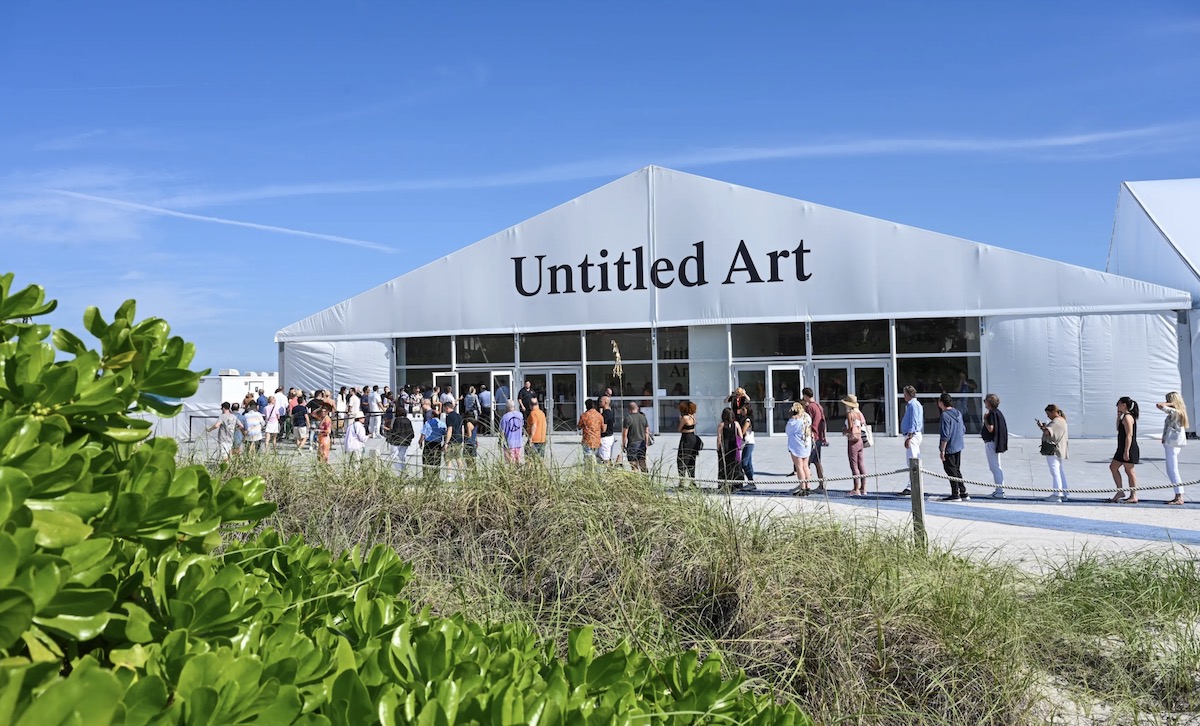Untitled Art, the latest independent art fair to succumb to corporate acquisition, follows a trend of industry consolidation. Recently, notable fairs such as The Armory Show in New York and Expo Chicago fell under the ownership of London-based Frieze, who divested a 70% stake to Endeavor Group Holdings in 2016. Formerly, William Morris, Endeavor and WME-IMG operate as a principal American holding company for talent and media agencies, with headquarters in Beverly Hills. Frieze expanded its influence beyond London and New York with Los Angeles and Seoul fairs. Endeavour’s acquisition of Frieze marked a strategic move in the art media domain, facilitating further expansion into key markets.
Meanwhile, Art Basel, a cornerstone of the art fair circuit, underwent a significant change in ownership in late 2020. James (son of Rupert) Murdoch’s private investment entity, Lupa Systems, emerged as the dominant shareholder of MCH Group, the Swiss parent company of Art Basel. This acquisition underscored the increasing influence of private investment in the art world’s commercial landscape.

In addition, Volta, a leading Swiss satellite art fair running during Art Basel, now falls under the purview of Will Ramsay’s Affordable Art Fair Group. The consolidation of Volta under Ramsay’s leadership indicates a broader trend of strategic realignment within the art fair ecosystem. Pulse, another notable player in the art fair arena, underwent rebranding efforts, emerging as Volta under Ramsay’s stewardship. This transformation reflects evolving market dynamics and the quest for greater synergy and efficiency in the global art fair landscape.
This week, Untitled Art announced that it was now owned by South Florida Ventures, a company specialising in luxury lifestyle brands and yachting trade shows. While the acquisition promises access to additional resources and opportunities for expansion, there are concerns about the loss of independence and grassroots appeal that defined the fair’s early years.
Despite the acquisition, Untitled Art remains committed to showcasing cutting-edge contemporary Art, with plans to expand programming and enhance the visitor experience. The fair aims to maintain its status as a premier destination for artists, collectors, and enthusiasts.
As the art fair landscape continues to evolve, questions linger about the impact of corporate consolidation on the vitality and diversity of the art world. With independent fairs facing increasing pressure to adapt to changing market dynamics, the future of these cultural institutions hangs in the balance.

A Short History Of International Art Fairs
International Contemporary Art Fairs have been integral to the global art scene, offering artists, galleries, collectors, and enthusiasts a platform to converge, exchange ideas, and showcase contemporary artworks. Their history dates back to the latter half of the 20th century.
The concept of art fairs gained momentum in the 1970s and 1980s, coinciding with the rise of contemporary art movements and the globalisation of the art market. Events such as Art Basel (1970) in Switzerland and FIAC (Foire Internationale d’Art Contemporain) in Paris (1974) emerged during this period, providing galleries with international exposure.
In the 1990s and 2000s, international art fairs expanded and diversified significantly. Cities like Miami, New York, London, and Hong Kong became prominent hosts for events such as Art Basel Miami Beach, The Armory Show, Frieze Art Fair, and Art Basel Hong Kong, reflecting the growing demand for contemporary art.
Throughout the 21st century, the proliferation of art fairs continued, driven by technological advancements and evolving market dynamics. Frieze Masters, Art Dubai, and TEFAF (The European Fine Art Fair encouraged more contemporary art) further broadened the reach and scope of the international art fair circuit.
The COVID-19 pandemic prompted a digital transformation in the art world, with many fairs embracing virtual platforms to connect with audiences and showcase artworks online. Virtual viewing rooms and digital programming became essential to contemporary art fairs, offering remote engagement opportunities.
International contemporary art fairs are expected to evolve, integrating hybrid models that combine physical and digital elements. Sustainability, diversity, and inclusivity are vital considerations that reflect broader societal concerns and values.
Art fairs have shaped the global art landscape, fostering creativity, collaboration, and dialogue across cultures. As dynamic platforms for artistic expression and exchange, these fairs are poised to remain influential in art.
Top Photo: Courtesy Untitled © Untitled 2024

